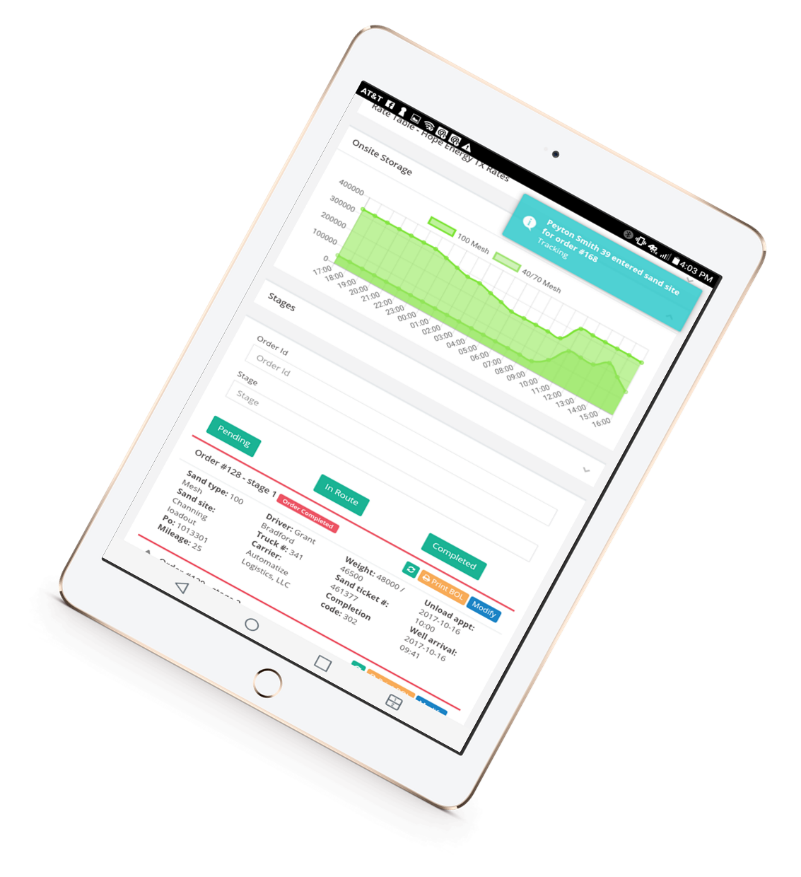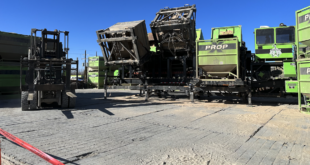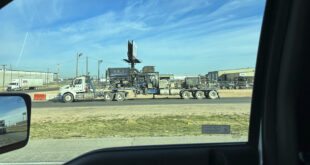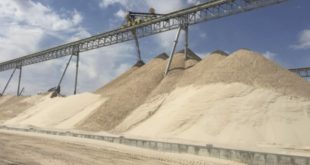So far in our Silica Valley series on last mile logistics software development, we’ve profiled two vastly different business models:
- PropDispatch is an enterprise software designed to be the logistics engine for pumpers and operators.
- Sand Tiger is a next gen dispatch system developed by a carrier to optimize the management of their own trucking fleet and provide their customers with enhanced visibility.
The third system in our series, Automatize, is a completely different animal than either of these.

User interface screenshot; courtesy Automatize
Automatize Introduces Collaborative Consumption In Last Mile Logistics
Founder Brad Nichols began idea generation and software development on the Automatize concept in early-2016. After beta testing in early-2017, the official launch of the system occurred in July 2017.
Automatize is essentially a network orchestration model. The platform offers a “collaborative consumption” option in last mile logistics to carriers, sand miners, pumpers, and operators.
The most well known and successful example of collaborative consumption in the tech world is Airbnb, which doesn’t own any assets but does connect lodging owners with travelers seeking short-term accommodation.
Here’s how Automatize applies collaborative consumption in frac sand’s last mile:
- Data for the design of the well is entered in the software by the job manager via an app or browser accessed portal.
- Automatize software manages the well’s sand logistics from there, with communication between the various last mile parties occurring through the app.
- Acting as an “on-demand” trucking facilitator, Automatize’s algorithms select trucks from the available pool in their managed network for allocations that minimize deadhead time.
- After selecting the driver, dispatch is automated by the software. Once a selected driver accepts a load, the smartphone app delivers the essential details to the driver’s phone: well location and operator, load specifications, PO, etc.
- After automating the dispatch of the truck, the system also notifies the origination facility (transload or mine) of the incoming trucks and the well-site parties that the truck is on the way.
- Invoicing is automated too – when a load completes, Automatize generates an invoice, audits it and submits it to the customer based on their specifications.
- The system will identify issues with loading facilities (for example if a mine is down) to enable decision making on the fly, but it does not yet automate response actions. That is a feature that is the company is currently developing for future versions of the system.
Speaking of versions, each Wednesday is update day at Automatize. The team is currently rolling out 10 – 15 system updates each week. Every customer and every sand plant wants something different and data formatted certain ways, so Automatize is constantly customizing and fine tuning their algorithms, features and interface.
One great feature of the current system is that it monitors and manages allocations (either daily and hourly) at sand plants. As allocations for a customer at a particular loading facility are exhausted, Automatize shifts pickups to the next loading option available to the customer. We see this as being particularly valuable to sand mines that have adopted this software and the value is enhanced when both buyers and sellers are on the network.
End users (be they sand consumers, sellers, or carriers) are able to review data on all their jobs, drivers, wells, pickups, etc. on a real-time graphical interface. Drill down is possible into details like BOL, drive times, and sand volumes through an HTML-based interface.
Automatize sources data and maps their network by synching up with the ELD hardware now required to be onboard sand trucks, smartphone GPS, and geo fencing around loading and unloading sites. If a driver’s cell phone loses signal in the field, the app goes into “offline” mode and data is uploaded when the driver re-enters a service area.
The value proposition Automatize is pitching truckers/carriers is three-fold:
- join and get more turns;
- join and get full back-office support from dispatch through billing at no extra charge (this has strong appeal for smaller carriers of which there are many); and
- join and get lead generation on jobs you wouldn’t have had otherwise.
Automatize’s revenue comes from an administrative fee, which is based on a percentage of load revenue. Who pays is up to the participants on a particular relationship or job. Sometimes the operator wants to absorb the cost, other times it may be the pressure pumper or sand mine that pays and then passes through the cost to their customers. Billing in each relationship is something Automatize staff customizes with each of its customers using the technology.
Working Out The “Chicken & Egg” Problem Of Building A Network
Since launch, the Automatize team has been working on building up the network on two fronts: “consumers” and “providers.”
Just like Airbnb needs just as many people with empty houses as people looking to move in for a weekend, Automatize requires adoption from both truckers and customers to provide the liquidity to make their platform work.
In the tech sector, all “network” concepts from social media to marketplaces have to solve the chicken and egg problem right out of the gate. That is they must to build adoption at both ends of the “user” spectrum – buyers need something to buy.
Less than a year post-launch, the Automatize team has made some impressive strides on building the user base.
- As of today, over 1,500 trucks have operated within the Automatize network.
- Over 50 carriers have been onboarded.
- Founder Brad Nichols says that things are tightening pretty quickly on the trucking side of the user spectrum at present. There’s more demand than trucks in the pool, so he’s working hard on onboarding more truckers and has added over 400 trucks in just the past 3 weeks or so.
- On the consumer side (pumpers, operators and sand providers), about 10 companies are using Automatize.
- A leading sand provider is using the software for last mile logistics across their regional mine portfolio.
- Cisco Logistics was actually in Automatize’s office when we interviewed founder Brad Nichols for this piece, and the sand hauler has onboarded their 250+ sand trucks into the network. Cisco interaction with Automatize will involve data feeds from the trucking company’s silos to enhance visibility, mapping sand from the road through the well-site.
- Automatize has been doing pilots for big pressure pumpers, and Brad Nichols says the feedback has been positive.
- The system has been used to facilitate last mile logistics for wells in Permian, Eagle Ford, Mid-Con and Haynesville.
Founder & Company Background
 Founder Brad Nichols has spent his career focused on logistics. After starting out in the relocation and distribution space, he quickly migrated to the oilfield and worked for a leading pressure pumper where as part of a team of seven he helped manage a combined force of over 1,500 trucks.
Founder Brad Nichols has spent his career focused on logistics. After starting out in the relocation and distribution space, he quickly migrated to the oilfield and worked for a leading pressure pumper where as part of a team of seven he helped manage a combined force of over 1,500 trucks.
As part of the logistics team at the pressure pumper, Brad saw the conventional system (emails and spreadsheets) replaced a transportation management system that was designed for over the road logistics rather than proppant delivery. During this process, he developed an understanding of what works and what doesn’t on the technology side.
Following the 2014 downturn, he began developing and building Automatize. As Brad says, the vision was simple but executing proved to be infinitely more complex than the basic concept: streamline communication, maximize utilization, reduce redundancy, and minimize waste.
The workforce at Automatize today has risen to stand at 15 employees. Brad and a couple other early members of the team came from the frac industry on the pressure pumping side. The rest of the team are technologists and developers as well as some logistics specialists from other industries.
The team ran a Series A funding round in 2017. Management has focused on staying as lean as possible, and the company is already cash flow positive less than a year from launch. With a secure financial footing, Brad believes that future growth will be funded by operating cash flow even though external capital could be obtained if needed.
Read more about our Silica Valley series>
About this Infill Thinking series: Our software feature pieces should be seen as introductions to the concepts and firms, not endorsements thereof. We have zero financial incentive to write about any of these specific solutions. None of the software companies we interviewed paid us for the exposure. Our singular motivation with this series is to document the various approaches, platforms, and systems in the market today in order to provide a comparative starting point for readers who may be trying to chose from a growing number of options.
feature image used with permission of Automatize
 Infill Thinking Lifting the O&G knowledge curve
Infill Thinking Lifting the O&G knowledge curve



